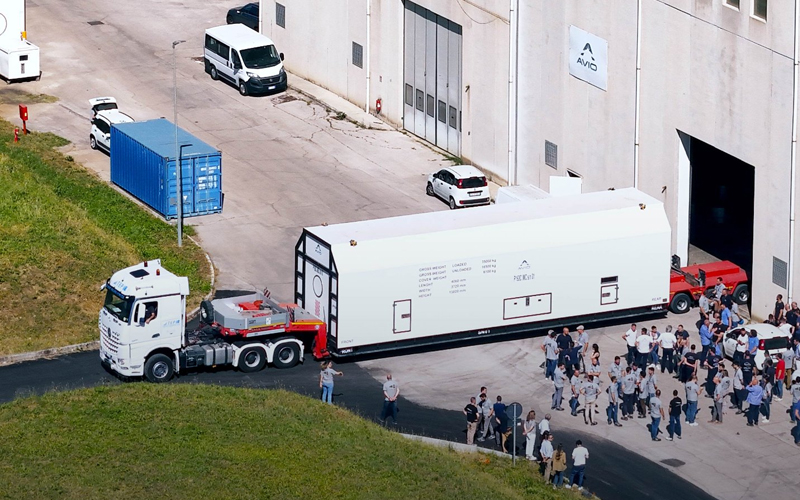
Italian rocket builder Avio has announced that it has shipped the first P160C solid fuel booster to French Guiana. The booster will be used aboard the ArianeGroup Ariane 6 Block 2 rocket and Avio’s next-generation Vega E rocket.
The European Space Agency announced in March 2022 that it would begin the development of an upgraded P120C booster. At the time, officials explained that the upgraded booster would be around one metre taller and feature 12 tonnes of additional propellant. The booster is being developed under the Europropulsion banner, which is a joint venture between Avio and ArianeGroup.
In a 19 June Twitter update, Avio revealed that it had shipped the P160C QM3 (Qualification Model) booster to French Guiana for loading and testing. Specifically, Avio has shipped the booster’s Insulated Motor Case, which is essentially a shell into which solid fuel is packed.
Once the booster arrives in French Guiana, Regulus, another joint venture between Avio and ArianeGroup, will be tasked with loading it with solid propellant.
In Avio’s 2023 half-year results presentation, the company targeted the end of 2024 for the booster’s static fire test. However, this timeline required the booster to be shipped to French Guiana by April 2024. As a result, the first P160C static fire test may have already slipped to early 2025.
Vega C return to flight
In addition to making progress with the development of its Vega E rocket, Avio has also recently taken a step toward returning its Vega C rocket to flight.
In December 2022, the second mission to be launched aboard a Vega C rocket failed. The cause of the failure was attributed to the Zefiro 40 (Z40) second stage throat insert. In June 2023, a static fire test of a Z40 booster that featured a throat insert manufactured using material from a different supplier also failed. The static fire test failure prompted a full redesign of the Z40 nozzle.
On 28 May, Avio announced that it had successfully completed the first of two static fire tests of the redesigned Z40 booster required to recertify it for flight. The second and final static fire test is expected to be conducted in October, enabling a return-to-flight mission to be conducted before the end of the year.

